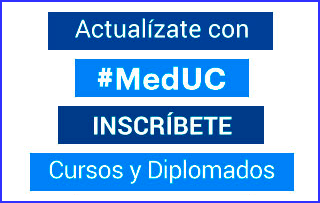Respuesta a medicamentos biológicos en pacientes con artritis reumatoide según nivel de actividad al inicio
Response to biological agents in patients with rheumatoid arthritis according to disease activity state at the beginning of treatment
DOI:
https://doi.org/10.11565/arsmed.v45i2.1673Palabras clave:
artritis reumatoide; inducción de remisión; terapias farmacológicas; agentes antireumáticos; inmunosupresores; medicamentos biológicosResumen
Introducción: la Ley Ricarte Soto (LRS) permite a pacientes con artritis reumatoide refractaria acceder a medicamentos biológicos. Sin embargo con esta regulación los pacientes inician éstos con actividad alta de enfermedad por un período prolongado, luego de recibir al menos 3 fármacos sintéticos. Previo a la implementación de esta ley no era necesario cumplir estos requisitos. Objetivos: comparar la respuesta a tratamiento lograda con el uso de medicamentos biológicos según niveles de actividad al inicio mediante la comparación de pacientes con biológicos antes y después de la LRS. Métodos: tomando datos del Programa de atención de pacientes con artritis reumatoide de la Red de Salud UC-Christus se compraró grupos de pacientes que accedieron a biológicos pre y post implementación de la LRS. Se analizó el cambio en DAS28 y la categorización de actividad de enfermedad según DAS28. Se realizó una regresión lineal evaluando edad, seropositividad y DAS28 pre tratamiento. Resultados: se encontró una diferencia significativa en el cambio de DAS28 a los 6 meses de tratamiento (p=0,02) y en la regresión solo con el DAS28 pre tratamiento (p=0,00). Dentro del grupo de pacientes que requirió cambio de biológico, los pacientes post ley iniciaron la terapia más activos y presentaban mayor persistencia de actividad severa a los 6 meses de tratamiento (11% vs 25%). Conclusiones: si bien el nivel de actividad al inicio no influyó en la respuesta a los 6 meses de tratamiento, si influyó en la persistencia de actividad severa en quienes requirieron cambio de biológico.
Descargas
Citas
Burmester G & Pope J. (2017). Targeted treatments for rheumatoid arthritis 2. Lancet 389, 2338-2348.
Durán J, Massardo L, Llanos C, Jacobelli S & Burgos P. et al. (2019). The prevalence of Rheumatoid Arthritis in Chile: a nation-wide study performed as part of the National Health Survey (ENS 2016-17). J Rheumatol. pii: jrheum.190396.doi:10.3899/jrheum.190396. [Epub ahead of print]
Hamann P, Pauling J, McHugh N, Shaddick G & Hyrich K, the BSRBR-RA Contributors Group. (2019). Predictors, demographics and frequency of sustained remission and low disease activity in anti-tumour necrosis factor–treated rheumatoid arthritis patients. Rheumatology 58, 2162–2169
Harrold L, Reed G & Magner R. (2015). Comparative effectiveness and safety of rituximab versus subsequent anti–tumor necrosis factor therapy in patients with rheumatoid arthritis with prior exposure to anti–tumor necrosis factor therapies in the United States Corrona registry. Arthritis Res Ther 17, 256
Hyrich K, Symmons D, Watson K & Silman A. (2006). Comparison of the response to infliximab or etanercept monotherapy with the response to cotherapy with methotrexate or another disease‐modifying antirheumatic drug in patients with rheumatoid arthritis: Results from the British Society for Rheumatology Biologics Register. Arthritis & Rheumatism 54, 1786-1794.
Hmamouchi I, Combe B, Fautrel B, Rincheval N & Lukas C. (2014). Prevalence and concordance of sustained remission assessed by various validated indices in the early arthritis “ESPOIR” cohort. Joint Bone Spine 81, 409-415.
Hughes C, Scott D & Ibrahim F. (2018). Intensive therapy and remissions in rheumatoid arthritis: a systematic review. BMC Musculoskelet Disord 19, 389
Listing J, Strangfeld A & Rau R (2006). Clinical and functional remission: even though biologics are superior to conventional DMARDs overall success rates remain low – results from RABBIT, the German biologics register. Arthritis Res Ther 8, R66
Minsal. (2014). Guía clínica Artritis Reumatoide, Ministerio de Salud. Gobierno de Chile, 12-14. Accedido en: https://www.minsal.cl/sites/default/files/files/GPC%20Artritis.pdf el 31 marzo 2020
Minsal. (2016). Tratamiento con medicamentos biológicos, Etanecept o Abatacept o Adalimumab o Rituximab en adultos con Artritis Reumatoide refractaria a tratamiento habitual. Ministerio de Salud. Gobierno de Chile, 9-10. Accedido en: https://www.minsal.cl/wp-content/uploads/2015/08/6_Protocolo-AR.pdf el 31 marzo 2020.
Minsal. (2018). Tratamiento con Etanercept o Abatacept o Adalimumab o Rituximab en personas con Artritis Reumatoide activa refractaria a tratamiento habitual. Ministerio de Salud. Gobierno de Chile, 8-11. Accedido en: https://www.minsal.cl/wp-content/uploads/2018/03/Protocolo-Artritis-Reumatoide.pdf el 31 marzo 2020.
Nam J, TakaseMinegishi K , Ramiro S., et al. (2017). Efficacy of biological disease-modifying antirheumatic drugs: a systematic literature review informing the 2016 update of the EULAR recommendations for the management of rheumatoid arthritis. AnnRheumDis 76, 1108–1113.
Schipper L, Vermeer M & Kuper H. (2012). A tight control treatment strategy aiming for remission in early rheumatoid arthritis is more effective than usual care treatment in daily clinical practice: a study of two cohorts in the Dutch Rheumatoid Arthritis Monitoring registry. AnnRheumDis 71, 845-850
Smolen J, Aletaha D & McInenes I. (2016). Rheumatoid arthritis. Lancet 388, 2023-38.
Smolen J, Landewe R & Breedveld F. (2014). EULAR recomendentions for the managment of rheumatoid arthritis with synthetis and biological disease-modifying antirheumatic drugs: 2013 update. AnnRheumDis 73, 492-509
Smolen J, Landewe R & Breedveld F. (2015). Treating rheumatoid arthritis to target: 2014 update of the recommendations of an international task force. AnnRheumDis 0, 1-13
Smolen JS, Landewé R Bijlsma J., et al.(2017). EULAR recommendations for the management of rheumatoid arthritis with synthetic and biological disease-modifying antirheumatic drugs: 2016 update AnnRheumDis 76, 960-977.
Soliman M, Hyrich K, Lunt M, Watson K, Symmons D & Ashcroft D on Behalf of the british society for rheumatology biologics register. (2012). Rituximab or a Second Anti–Tumor Necrosis Factor Therapy for Rheumatoid Arthritis Patients Who Have Failed Their First Anti–Tumor Necrosis Factor Therapy? Comparative Analysis From the British Society for Rheumatology Biologics Register. Arthritis Care & Research 64, 1108 –1115.
Van Riel PL & Renskers L. (2016). The Disease Activity Score (DAS) and the Disease Activity Score using 28 joints counts (DAS28) in the management of rheumatoid arthritis. Clin Exp Rheumatol 34, S40-44

Descargas
Publicado
Cómo citar
Licencia
Derechos de autor 2020 ARS MEDICA Revista de Ciencias Médicas

Esta obra está bajo una licencia internacional Creative Commons Atribución-NoComercial-SinDerivadas 4.0.
A partir del 1 de octubre 2023, los autores/as conservan sus derechos de autor y garantizan a la revista el derecho de primera publicación de su obra, la que estará simultáneamente sujeta a la Licencia CC BY-SA 4.0 (Ver declaración de Acceso Abierto).








